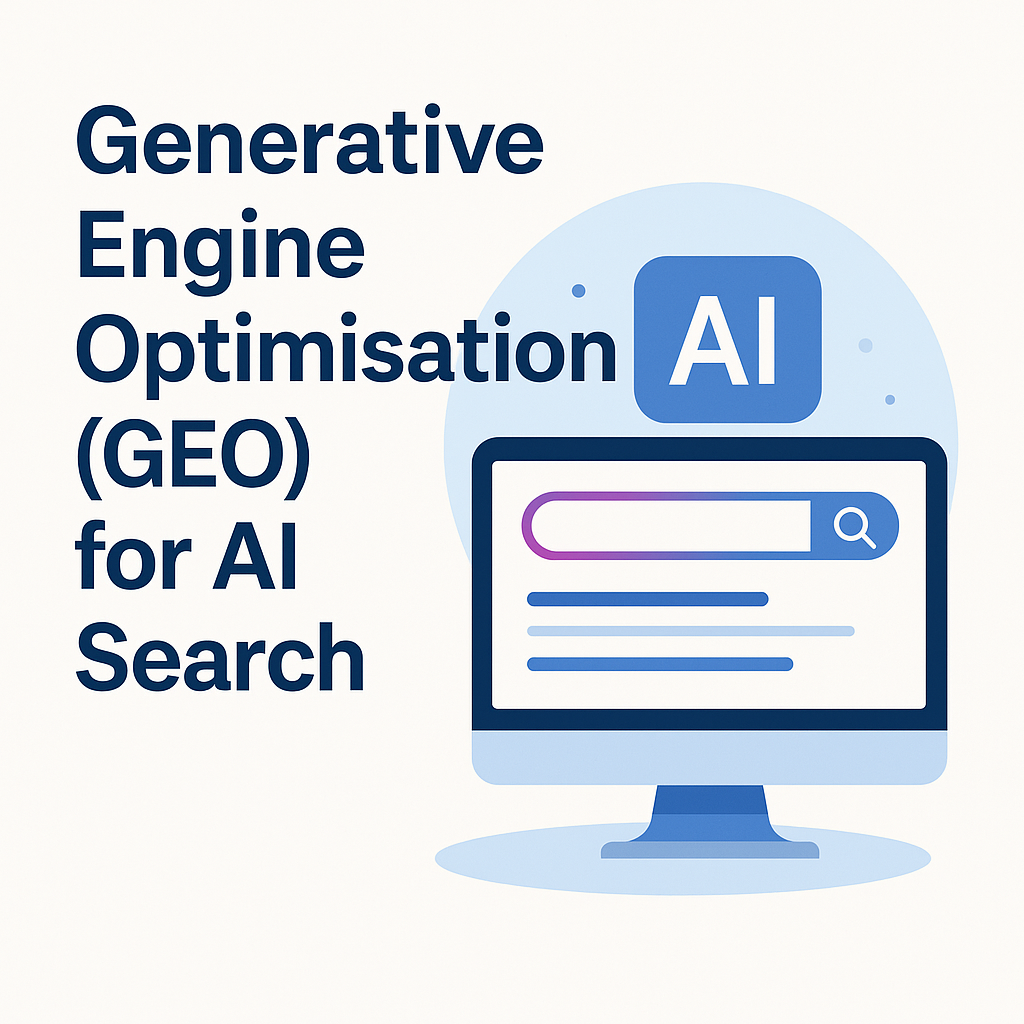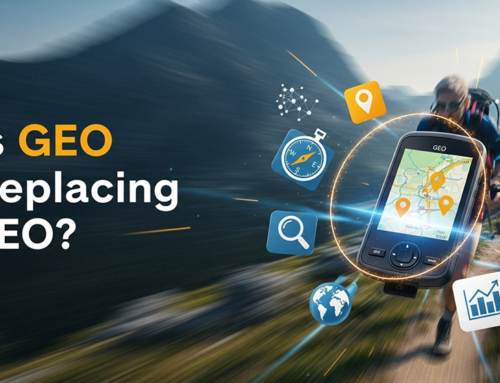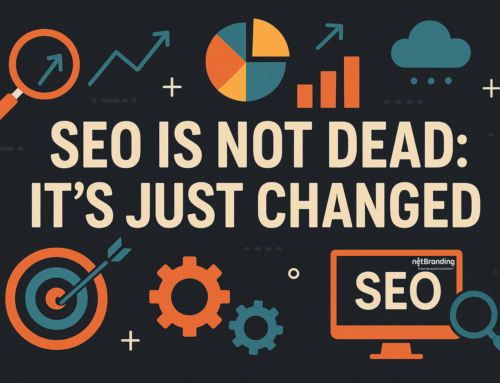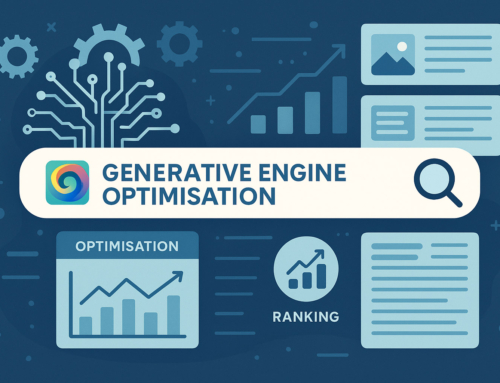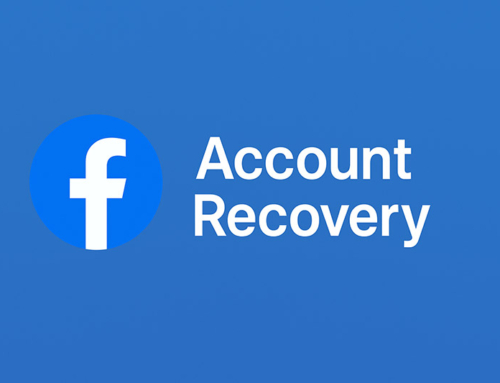
Author view
At Net Branding, I think SEO still works. It just works differently now.
Quick answer. is SEO dead in 2025
No. SEO is not dead.
AI changed how results look.
You still need strong SEO.
You now add GEO to win citations inside AI answers.
At Net Branding we see this daily across New Zealand sites.
- SEO earns rankings on the page.
- GEO earns mentions inside the AI summary.
- You want both. Not either or.
Start with small moves
- Put the answer first on key pages.
- Use short lists and a tiny fact box.
- Add a named author. Real person. Real role.
- Track leads and calls. Not only traffic.
It is a bit messy. That is fine. You can still grow.
What GEO is and how it sits above SEO
The foundation vs layer model
SEO is your base.
- Crawl. Index. Rank.
- Site structure and internal links.
- Helpful pages that load fast.
GEO is a layer above.
- Make your words easy to quote.
- Clear answers. Short paragraphs.
- Evidence, authors, and tidy markup.
At Net Branding we explain it simply.
- SEO gets you seen.
- GEO helps you get cited.
- Together they keep you chosen.
Key differences
- SEO aims for positions. GEO aims for citations.
- SEO cares about keywords. GEO cares about questions and claims.
- SEO is page-led. GEO is entity-led.
Quick test
- Would a person quote this section
- Would a model trust the author on it
- Is the conclusion upfront
AI Overviews and AI Mode. What changed and why you felt it
What triggers these features
They show up on
- Question-led searches.
- Tasks with steps or safety notes.
- Comparisons and local choices.
What to do on page
- Mirror the question in an H2.
- Give a two-line answer.
- Add a short list that the model can lift.
- Add one cautious note if the topic needs care.
You cannot force the trigger.
You can be the safest source to cite when it appears.
At Net Branding, we keep examples and redactions handy. We study the patterns, not the brands.
SEO vs AI search. The practical differences
Ranking vs referencing
Old goal
- Get to page one.
New extra goal
- Be referenced inside the AI answer.
Write accordingly
- Lead with the conclusion.
- Keep paragraphs short.
- Label steps, risks, and time frames.
- Use a small glossary when terms confuse readers.
We see better lifts when the conclusion is in the first two lines. Net Branding has made this a house rule.
Does AI kill SEO? The honest view
Where SEO still wins
SEO remains strong for
- Branded and navigational queries.
- Product pages and categories.
- Evergreen how-to content with tools or visuals.
- Local discovery where the map pack matters.
Keep doing the basics well
- Clear site architecture.
- Helpful evergreen hubs.
- Image and video – where it helps the task.
- Sensible linking and mentions.
At Net Branding, we still see a lot of leads from classic SEO. It would be odd to drop it.
Where GEO wins
GEO shines on layered questions.
Example
- Best heat pump size for a two-bedroom unit in Auckland
- What to do if a child has recurring ear infections
To win those
- Give a short answer first.
- Add context for different cases.
- Include a tiny chooser table.
- End with a next step.
Sometimes the citation matters more than the rank. We have seen that. Not always. Enough to plan for it.
Risks and myths
Common myths
- AI killed all clicks. It did not.
- You must rewrite everything. You do not.
- Schema alone will fix it. It will not.
Watch outs
- Thin summaries.
- Claims without a source.
- Fake authors.
- Over tidy content that feels generated.
Safer path
- Short human lines.
- Real authors.
- Modest citations.
- Small updates often. Perhaps weekly at first.
This is how Net Branding ships content. Low drama. Steady gains.
Author profiles and E E A T
Attach real people to important pages
- Name. Role. Two line bio. Headshot.
- Link to a fuller profile with credentials and memberships.
Add E E A T touches
- Experience. A short case line.
- Expertise. Correct terms in plain English.
- Authoritativeness. Neutral references.
- Trust. Contact details and updated dates.
We publish author cards on page one. Not buried. That single change lifts trust.
FAQ blocks mapped to follow-ups
People and AI ask follow-ups. Plan for them.
Do this
- List five follow-ups you hear on calls.
- Turn each into an H3.
- Give a short answer first.
- Add one line on risks or exceptions.
- Add FAQ schema.
Net Branding uses client call notes for this. Your inbox is a gold mine.
Table. Citation-ready page checklist
| Element | What to add | Why it helps |
|---|---|---|
| Answer first | Two lines under the H1 | Easy lift for summaries |
| Fact box | One or two numbers with a light source | Safer to quote |
| FAQ block | Five follow-up questions users ask | Mirrors AI follow-ups |
| Author card | Name, role, short bio | Entity and trust |
| Review proof | One line quote with initials and suburb | Local signal without oversharing |
GEO for New Zealand sectors. fast use cases
Trades and local services
Queries often trigger AI.
Add
- Short answer with a safety note if relevant.
- A tiny table. Problem. Quick check. When to call a pro.
- Suburb details. Response times.
- FAQs on urgency and who pays.
Make contact easy. Phone and form near the fold.
Net Branding will often surface the phone number twice on mobile.
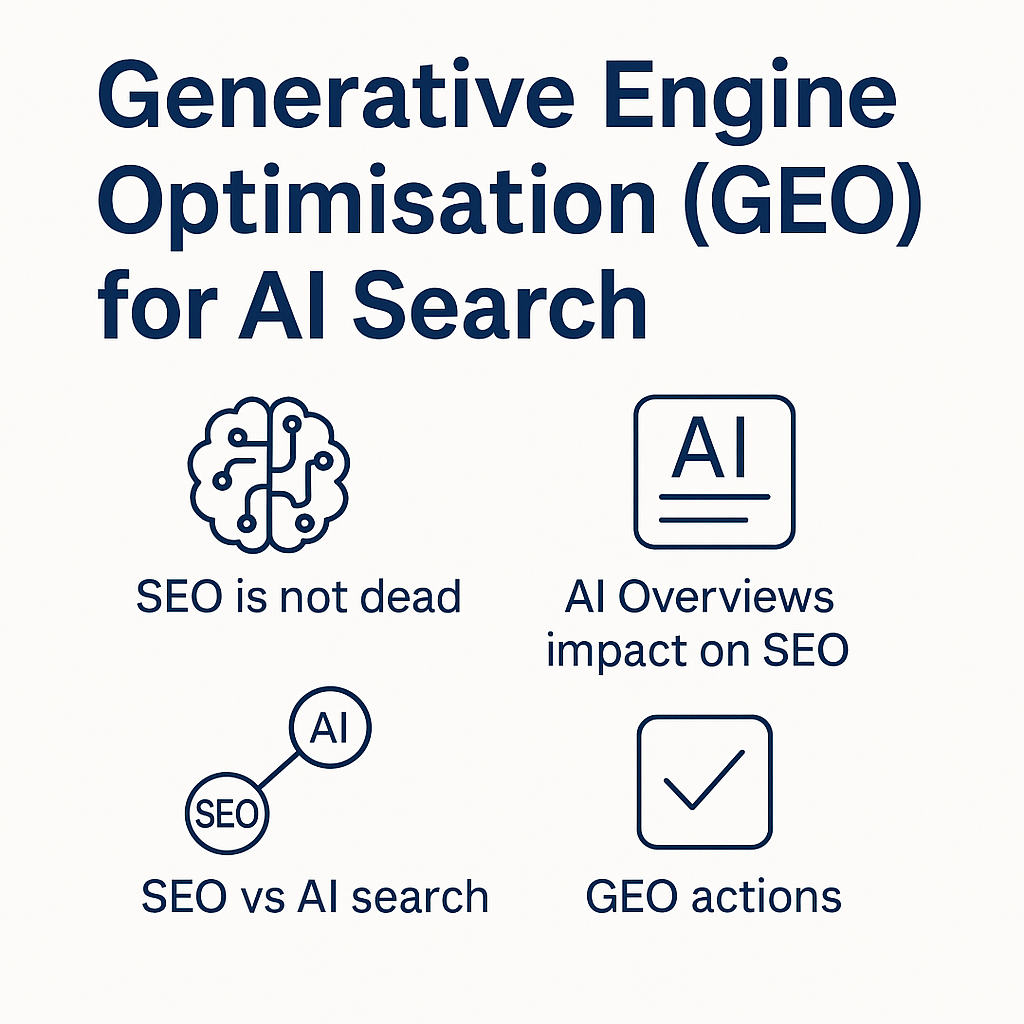
Education and professional services
Users want steps, eligibility, and outcomes.
Add
- Step by step path with time frames.
- Entry requirements.
- Cost structure in plain ranges.
- Small glossary.
- Contacts and next intake dates if relevant.
Measurement when tools lag
Baselines
Before you change pages, record
- Leads by type. Calls. Forms. Bookings.
- Lead quality tags.
- Top pages that drive those leads.
- Search terms that matter.
Update content.
Annotate the date.
Watch trends for four to eight weeks.
Net Branding shares a two column view. Changes on the left. Outcomes on the right. It keeps the team honest.
SERP capture for AI answers
Simple weekly habit
- Search your target questions in a clean browser.
- Screenshot when AI appears.
- Note which sources are cited.
- Track frequency by query.
- Store in a dated folder.
If citations rise, keep polishing.
If not, tighten the answer or add a small stat.
Server-side events and annotation
Clicks can be noisy.
Make conversions solid.
Do this
- Track server side events for key leads.
- Respect consent.
- Note content updates in your analytics.
- Align ad and organic reports to the same lead sheet.
You will not measure everything perfectly. Few can.
Focus on reliable signals.
Net Branding leans on calls and booked jobs as truth.
Contact
Net Branding Limited
Auckland, New Zealand
Phone: 09 523 0478
Email: info@netbranding.co.nz
Website: netbranding.co.nz

